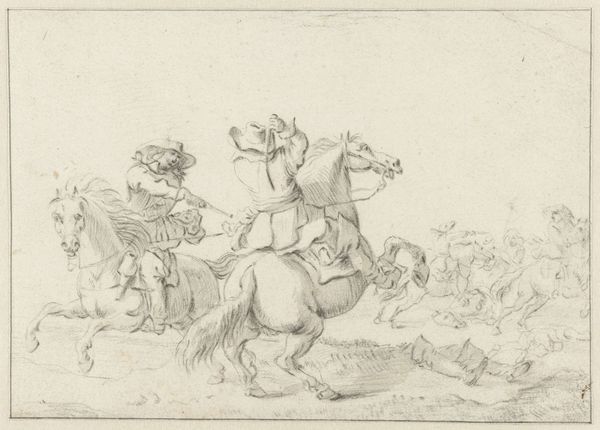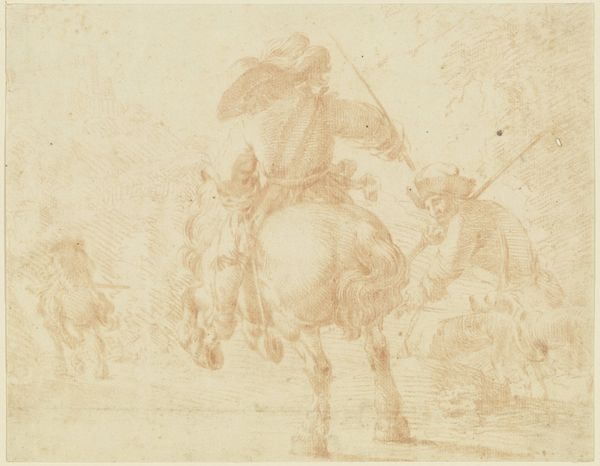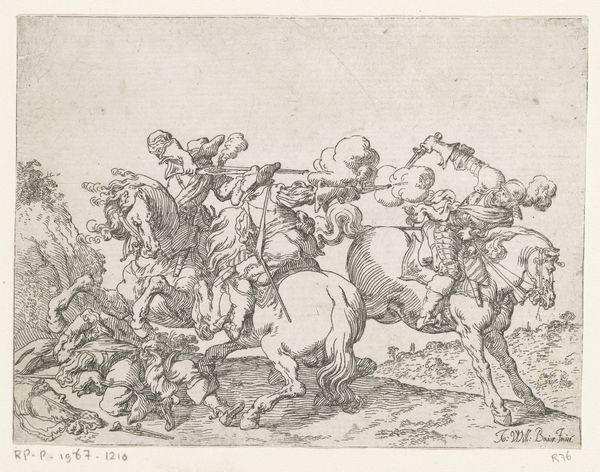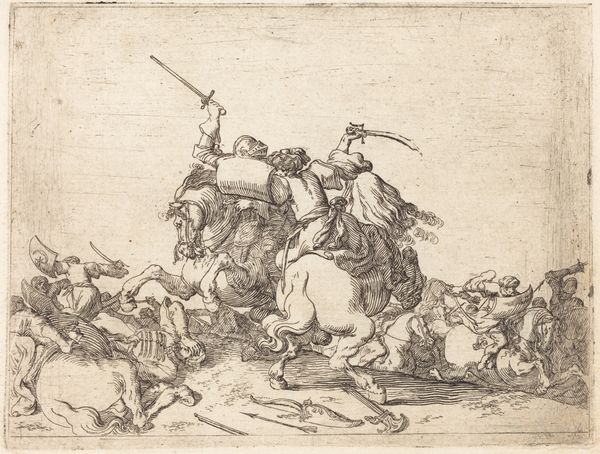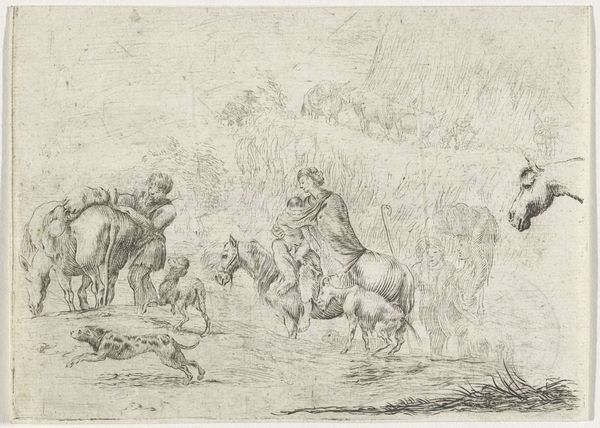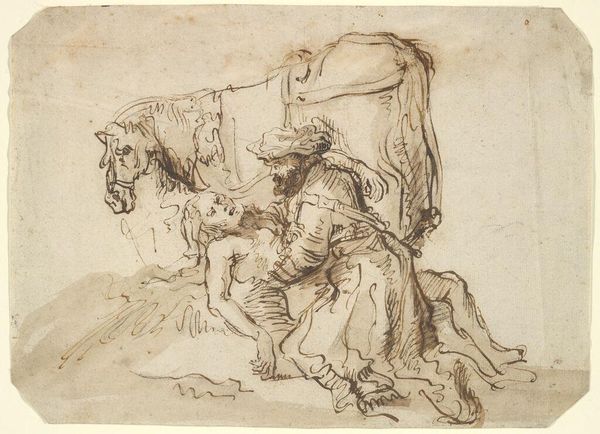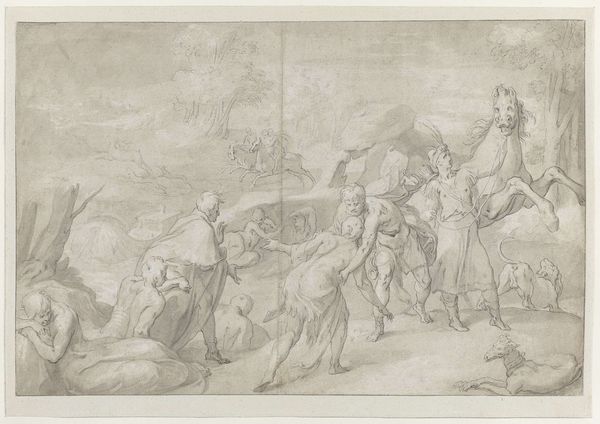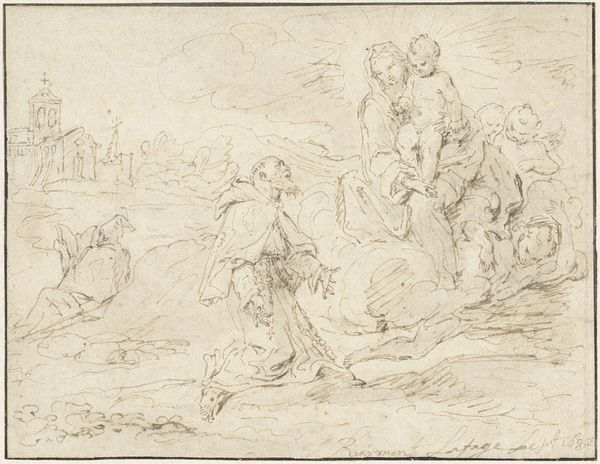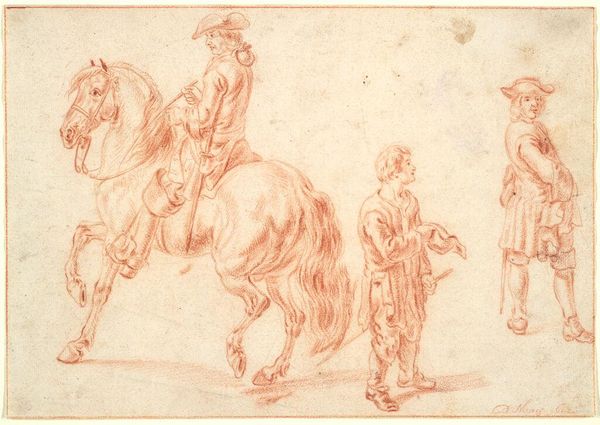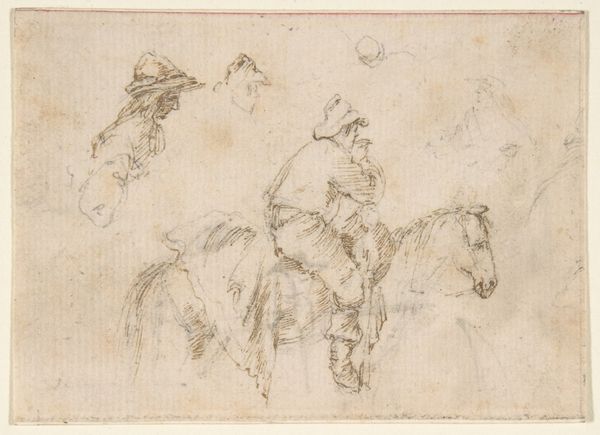
drawing, pencil
#
drawing
#
baroque
#
landscape
#
figuration
#
pencil
#
genre-painting
Dimensions: height 192 mm, width 308 mm
Copyright: Rijks Museum: Open Domain
Editor: This drawing, “Two Soldiers on Horseback,” from circa 1634-1636, is by Gerard ter Borch, rendered in pencil. The figures are very detailed and give a feeling of intense movement. What stories do you see woven into the sketch? Curator: Well, consider the period: the Dutch Golden Age, fueled by trade and colonialism, but also marked by conflict, right? This sketch, while seemingly a simple genre scene, can be read as participating in and perhaps even glorifying military power, an exercise inseparable from commerce during the time. How might it justify or naturalize certain hierarchies? Editor: I hadn’t thought about it like that. It's easy to just see the skilled draftsmanship. What in the composition cues you to that reading? Curator: Look at the posture of the soldiers: upright, weapons raised, asserting authority over an implied space. Now, consider the gaze; we are placed in a subordinate position, as if we're the potential targets of their military readiness. It reflects how power dynamics of the time seeped into the visual culture. Doesn't it feel like the work subtly conditions us to accept such authority? Editor: It does, now that you point it out. I guess I focused so much on the horses and the details that I missed how it normalizes the power dynamic. I see the activism in your words. So, is there space to admire it without ignoring the political subtext? Curator: Absolutely. Recognizing the power dynamics allows us to have a more nuanced reading, engaging with the piece not as passive observers but as active participants who are critical about its underlying messages and cultural impact, opening it to interpretations relevant to today. It's about acknowledging history and its intersectional ties to social structure and modern thought. Editor: Thank you. This makes me see the art with fresh eyes, as more than technique. I realize that even subtle choices embed messages that continue to reverberate. Curator: Precisely! Questioning the art world from multiple perspectives keeps our understanding alive.
Comments
No comments
Be the first to comment and join the conversation on the ultimate creative platform.
